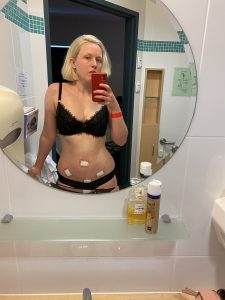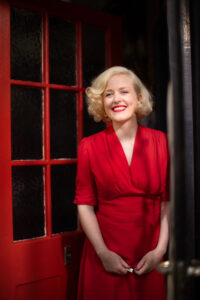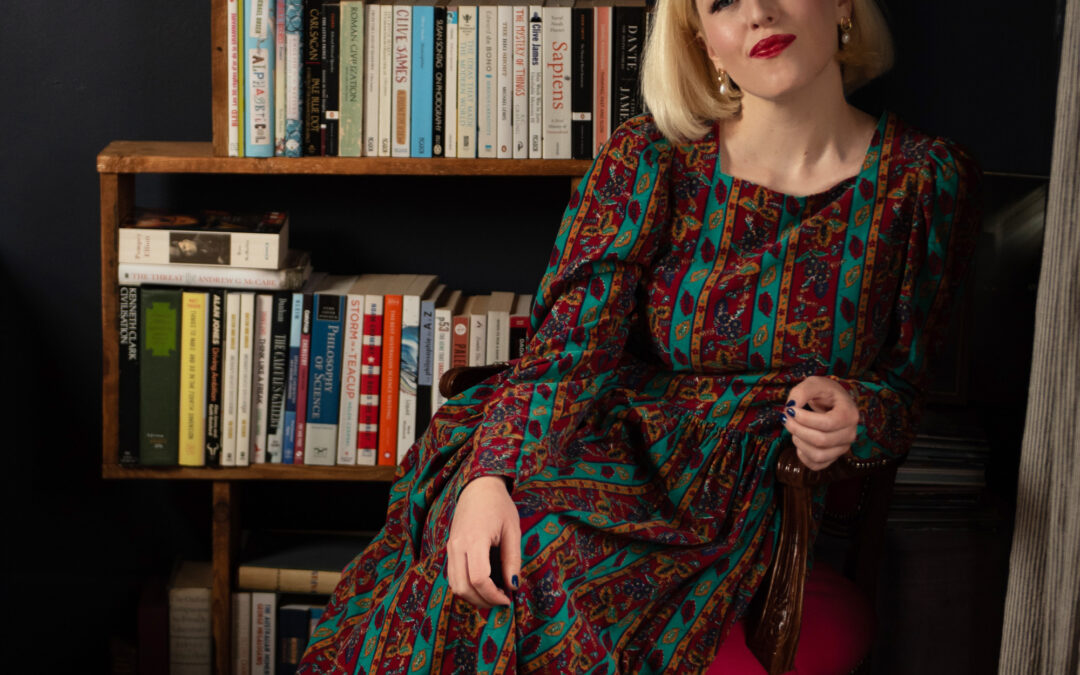I first felt the symptoms of endometriosis as a young teen, with periods so heavy I was having to change my tampon every 20 minutes – not conducive with the freedom and agility one should feel at age 14. Like most teenagers with even the vaguest of hormonal problems, I was quickly put on the pill and that was that. However years later into my adulthood, I decided to take myself off this medication and investigate what was really going on.
Weaning off the contraceptive pill was a whirlwind, my mental health improved but my physical health deteriorated drastically. My periods were so frequent and so unpredictable that it was becoming hard to live my life. Not only were my periods difficult but I personally found the pain of ovulation utterly unbearable, not to mention the bloating.
Diagnosis
I started sharing my symptoms with various doctors, first with my family doctor in New Zealand, who told me what I was experiencing was “normal”. Back in Sydney, where I was living at the time, I visited various bulk-billing doctors, some of whom wanted to help but the limiting,15 minute appointments made it tricky. I did find a doctor who was wonderful, helping me investigate things further and suggesting I get an IUD. She was pregnant at the time and when I arrived at a follow up appointment the receptionist told me she’d had to go on early maternity leave and I was to see another doctor. I was so frustrated as I’d finally found a health professional I could trust and who wanted to help me, however I understood her situation and in some ways felt lucky I’d had the experience of having a doctor who had actually listened to me.
Shortly after, a move interstate meant I had to start again with new doctors and go on a new public list for surgery. The job I had moved to Melbourne for was demanding and I began feeling utterly miserable, as though my life was dictated by a disease that hadn’t yet been officially diagnosed. During this time, I began researching and reading more about my symptoms, feeling certain that I must have endometriosis. Despite working in a female-friendly environment, and having the support from my boss, the side eyes from certain colleagues each time I’d need to leave early or pop out for an appointment would fill me with a sense of guilt and shame.
 After a year of monthly doctor’s visits, regular visits to a private specialist, and various visits to all sorts of holistic healers and practitioners, thousands of dollars later, I finally received my first laparoscopy via the public health system just before lockdown in March of 2020. Whilst the procedure confirmed what I already knew, that I had stage four endometriosis, it also was not a good experience. It turned out I had inadequate doctors perform my procedure, failing to remove the bulk of the endometrial like tissue that riddled my pelvis. Of course, as the world was on the brink of closing down, hospital support staff’s minds were understandably elsewhere and I did not receive suitable aftercare, making it a miserable and overly ineffective surgery. I even opted to go home the same day as my procedure, just so I wouldn’t have to stay in that particular hospital overnight, despite being told I needed to. I spent that night in tears, and in utter agony, at home instead. Fortunately my boyfriend took care of me, otherwise I don’t know what I would have done.
After a year of monthly doctor’s visits, regular visits to a private specialist, and various visits to all sorts of holistic healers and practitioners, thousands of dollars later, I finally received my first laparoscopy via the public health system just before lockdown in March of 2020. Whilst the procedure confirmed what I already knew, that I had stage four endometriosis, it also was not a good experience. It turned out I had inadequate doctors perform my procedure, failing to remove the bulk of the endometrial like tissue that riddled my pelvis. Of course, as the world was on the brink of closing down, hospital support staff’s minds were understandably elsewhere and I did not receive suitable aftercare, making it a miserable and overly ineffective surgery. I even opted to go home the same day as my procedure, just so I wouldn’t have to stay in that particular hospital overnight, despite being told I needed to. I spent that night in tears, and in utter agony, at home instead. Fortunately my boyfriend took care of me, otherwise I don’t know what I would have done.
I spent both lockdowns last year in a lot of pain and distress, all whilst watching my city open and close and feeling the pain that came from the pandemic as well. When Melbourne finally re-opened after the lengthly second lockdown, I was fed up and ready for action. I opted to go completely private with my medical care, a luxury I know few women in this country can afford, and booked in a private laparoscopy for November. This procedure was successful. Afterwards, my doctor relayed his findings to me, and showed me images of how the endometrial like tissue had taken over my body. I had tissue all over what seemed to be everywhere throughout my lower abdomen, including my bladder and liver. These discoveries finally shedding light on why I had felt like a floating ball of pain for so long (and that I felt I needed to pee for over a year!). My doctor’s words to me at the time to me were “I have no idea how you were getting around in life.”

Lifestyle changes
The list of things my disease has prevented me from doing is endless. I meticulously plan my life around my menstrual cycle, knowing well what point in the month I’ll be bedridden and how good (or normal) I’ll feel during my ‘magic week’ – that being the sweet spot between menstruation and ovulation. Sometimes, however, I just can’t plan everything perfectly, especially if I am working to the schedule of somebody else (a client). It’s at these moments that I allow myself to take painkillers and I just have to power through, not that I think that’s right or fair, but I want and need to be a part of the working world, and really that world is not yet set up for women’s bodies. Having endometriosis also affects my sex life and my ability to be active too.
My only advice to fellow sufferers is to adjust their diets to help with their pain. I know some women who have thrived on a low FODMAP diet, for example, and in my case totally cutting out dairy has been key. If they can work flexible hours, in my case I’m self-employed, then that’s the best option. If it’s possible for others I would also recommend private health care, which has worked for me. I also highly recommend the book Beating Endo, which has helped me understand my disease better and allowed me to see how it interlinks with the body and my other physical health issues, such as my hyper-mobility and eczema. Beyond that, the book Woman Code, by Alissa Vitti has helped shed light on the female cycle and how diet impacts our health much more than we care to believe.
It concerns me that there are so many women in this country without the option of treating their disease privately. I think that Australia, and the world beyond, urgently need more research and more public resources to fight this disease that is controlling and ruining so many lives. I often imagine women living in rural areas, far away from the high-calibre hospitals we have access to in the city, with kids and other responsibilities, without much money or access to premium private health care, all whilst battling endo. I imagine if I were in that situation myself, and what I would do. I don’t know how I would cope, I don’t know how they cope. It doesn’t feel fair that our public health system cannot support women with endo in this country.
Currently, I’m eight months post my more recent laparoscopy and I’m starting to feel my symptoms flow back slowly. Literally, as I write this I’m a week off getting my next period yet I’m sitting on my sofa with a hot water bottle to my belly. With the help of my current doctors, though, I am finally getting on top of this rampant illness. I know that hormonal medication is not an option for me, given what it does to my mental health, so I try to combine the best medical care with a holistic, everyday plan. Another huge help in my life has been my partner, Dylan. I am lucky to be with a compassionate and obliging man who is so thoughtful around my disease. My heart goes out to anyone suffering from endometriosis, no matter who they are or to what extent it controls their bodies. The only positive thing about this moment in time is that we are finally developing a voice and awareness around this disease.
Charlotte Dallison is a freelance writer and vintage shop owner based in Melbourne, Australia. She is currently working on her first book about sourcing vintage clothing.
Written by,
Charlotte Dallison
Photo credits:
Hunter & Bloom Photography
Simon Schluter

